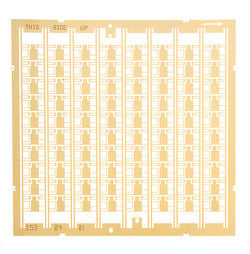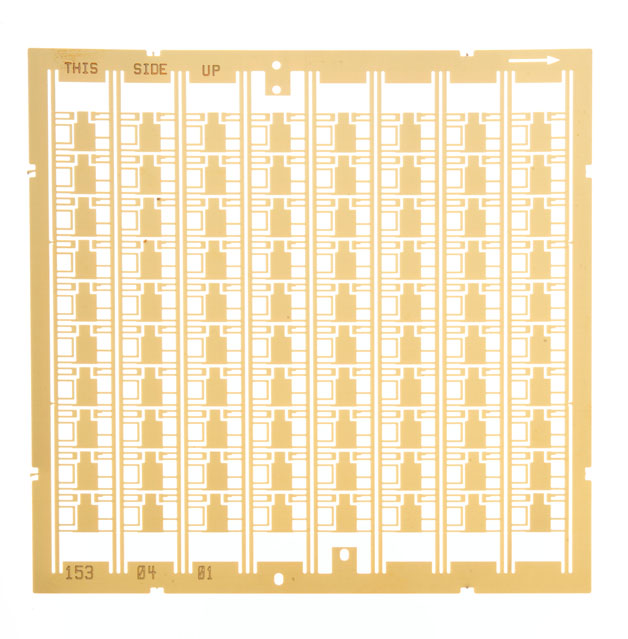Sheet Size and Tolerances: Cost Drivers in Photo Etching

Three Leading Factors
The three biggest variables affecting the cost of photo etching are metal thickness, sheet size and tolerances. Metal thickness bears directly on the length of time it takes to etch through a given metal thickness measured in minutes per mil (.001") of thickness. Sheet size drives the amount of labor that accumulates.
Large or Small: All Sheets have the Same Process
The photo etching process has seven essential steps: cutting, cleaning, laminating, printing, developing, etching and stripping. For each of these steps, a sheet of material must be handled. Each time a sheet is handled into and out of a step in the photo etching process, labor is applied. If you were loading and unloading a pizza oven, your hands wouldn't care if it was a small pizza or a large pizza. You can easily see that loading and unloading many small sheets (pizzas) consumes more labor than handling a smaller number of large sheets.
Tolerances Drive Sheet Size
Let's take a basic part: 1-inch diameter .010- inch thick stainless steel disk. (It could be a washer or even a screen because the holes just don't matter to cost.)
With tolerances of +/-.005", we could run this on an 18 x 24 sheet. There would be 336 pieces on the sheet and 5000 pieces would cost $.77ea ( less metal cost.)
At +/-.003", we would run a 12 x 24 sheet with 210 pieces at a cost for 5000 pieces at $1.03.
At +/-.002", the sheet would be 12 x 12 with 100 pieces, and the price would be $1.69 each.
If you desperately needed +/-.0015", the sheet size would drop to 6 x 12 with 50 pieces; the yield would also likely drop below 80% and require 100% inspection. The price of such folly would be $3.57 each.
When Perfect is the Enemy of the Good
I get it. The 6-Sigma frame of mind wants to drive out variability in every dimension. What we have observed on a number of occasions is that designers and engineers don't have an accessible reference to understand the cost impacts of overly restrictive tolerancing, especially in the context of particular applications.
We are happy to provide nuanced quotes so that you can see the impact of tolerances on costs. Just let up know what you need. Quotes are always free!



